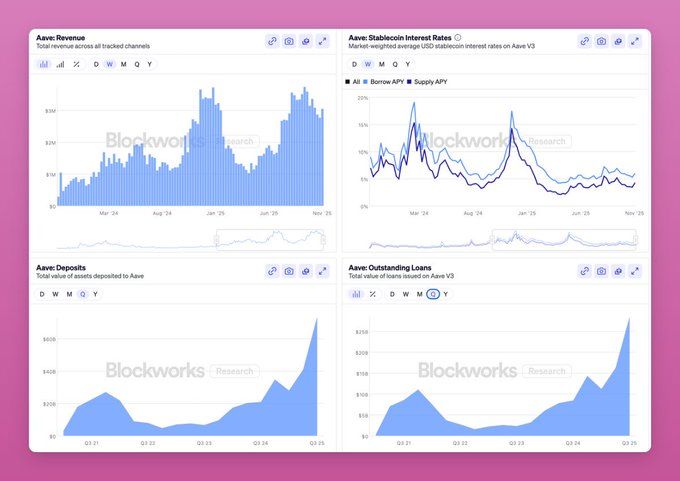Federal Reserve says US banks should serve crypto without fear of penalties
Federal Reserve Vice Chair for Supervision Michelle Bowman acknowledged that crypto firms experienced debanking due to regulatory uncertainty.
During the Wyoming Blockchain Symposium on Aug. 19, Bowman also announced a fundamental shift in the Fed’s approach to blockchain innovation.
She revealed the central bank eliminated reputational risk considerations from bank supervision in late June to address barriers preventing financial institutions from serving digital asset companies engaged in legal activities.
The Fed official stated:
“Your industry [crypto] has already experienced significant frictions with bank regulators applying unclear standards, conflicting guidance, and inconsistent regulatory interpretations.”
Bowman emphasized that banks should not face penalties for serving customers conducting lawful business operations, stating that customer selection decisions “lie solely within the purview of bank management” rather than regulatory interference.
Furthermore, she noted the Fed’s transition from an “overly cautious mindset” toward embracing blockchain technology within the traditional banking system.
She warned that regulators must choose between shaping technological frameworks or allowing innovations to bypass banks entirely, potentially diminishing the banking sector’s economic relevance.
The Fed is updating examination manuals and supervisory materials to ensure lasting implementation of the reputational risk removal policy.
Four-principle regulatory framework
The Fed Vice Chair established four core principles guiding the central bank’s new approach to digital asset regulation.
Regulatory certainty tops the list, addressing industry concerns about investing in blockchain development without clear supervisory standards.
Bowman questioned whether companies would partner with banks, knowing that regulatory scrutiny brings uncertainty, rather than pursuing alternatives outside the banking system.
Tailored regulation forms the second principle, requiring supervisors to evaluate use cases based on specific circumstances rather than applying worst-case scenario expectations.
The Fed must recognize unique features distinguishing digital assets from traditional financial instruments while avoiding one-size-fits-all approaches that fail to address actual risk profiles.
Consumer protection represents the third principle, ensuring customer-facing products comply with existing consumer protection laws, including prohibitions against unfair, deceptive, or abusive practices.
Digital asset frameworks must incorporate Bank Secrecy Act and anti-money laundering requirements while maintaining bank safety and soundness standards.
American competitiveness completes the framework, positioning the US as the premier global innovation destination. Bowman warned that failing to establish appropriate regulatory structures could jeopardize long-term American leadership in financial technology development.
Technology integration and supervision changes
Bowman announced the Fed’s “novel supervision” activities will be reintegrated into Reserve Bank examination staff, reestablishing normal supervisory processes for monitoring banks’ innovative activities.
She proposed allowing Federal Reserve staff to hold minimal digital assets to develop a working understanding of blockchain functionality, comparing the necessity to hands-on learning rather than theoretical knowledge.
[Editor’s Note: This is an abrupt U-turn from previous government approaches, notably those of former SEC Chair Gary Gensler. Gensler taught college-level blockchain courses at MIT yet never actually touched a blockchain with his own funds, having admitted to never holding any digital assets and, therefore, never executing his own transactions.]
The Fed recognizes tokenization potential for facilitating faster asset ownership transfers while reducing transaction costs and settlement risks. Bowman noted that banks of all sizes, including community institutions, can benefit from efficiency gains flowing from asset tokenization technology.
Furthermore, she highlighted that the GENIUS Act passage and presidential signature position stablecoins as integral components of the financial system, with implications for traditional payment rails.
Bowman called for industry engagement to help regulators understand blockchain’s capacity for solving additional problems beyond current use cases.
She specifically requested input on leveraging new technologies to combat fraud, identifying this as an exciting collaboration opportunity between the Fed and the digital asset sector.
The Fed Vice Chair concluded that innovation and regulation complement rather than oppose each other in creating more modern, efficient financial systems.
The post Federal Reserve says US banks should serve crypto without fear of penalties appeared first on CryptoSlate.
Disclaimer: The content of this article solely reflects the author's opinion and does not represent the platform in any capacity. This article is not intended to serve as a reference for making investment decisions.
You may also like
SoFi Becomes First U.S. National Bank to Offer Crypto Trading Amid Regulatory Shift

JPMorgan Pilots JPMD Deposit Token on Base, Accelerating Institutional On-Chain Finance

Ethereum Price At Crossroads: $3,532 Support Or $3,326 Slide?

AAVE Price Prediction 2025: AAVE Eyes 2x Rally With Record On-Chain Growth

